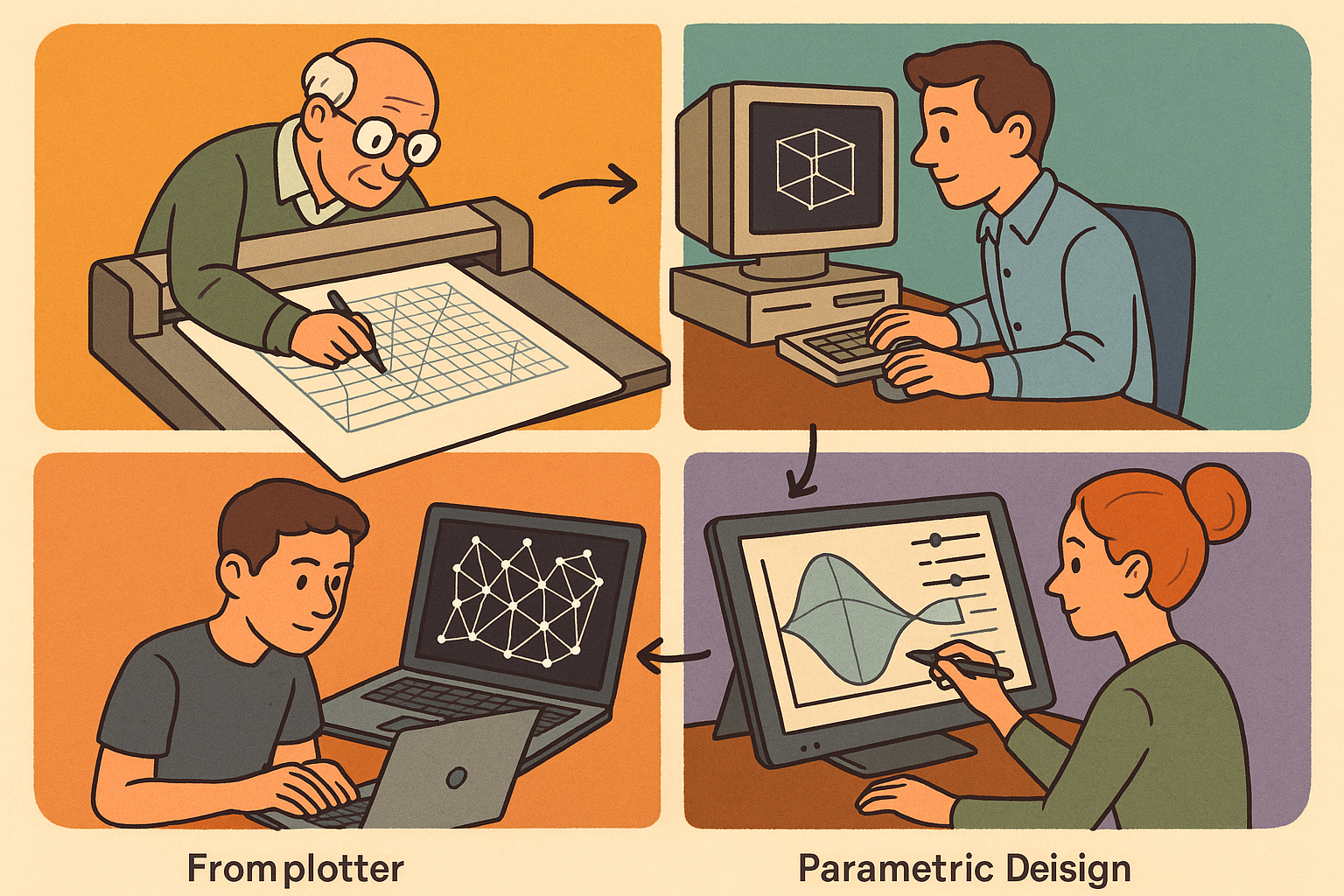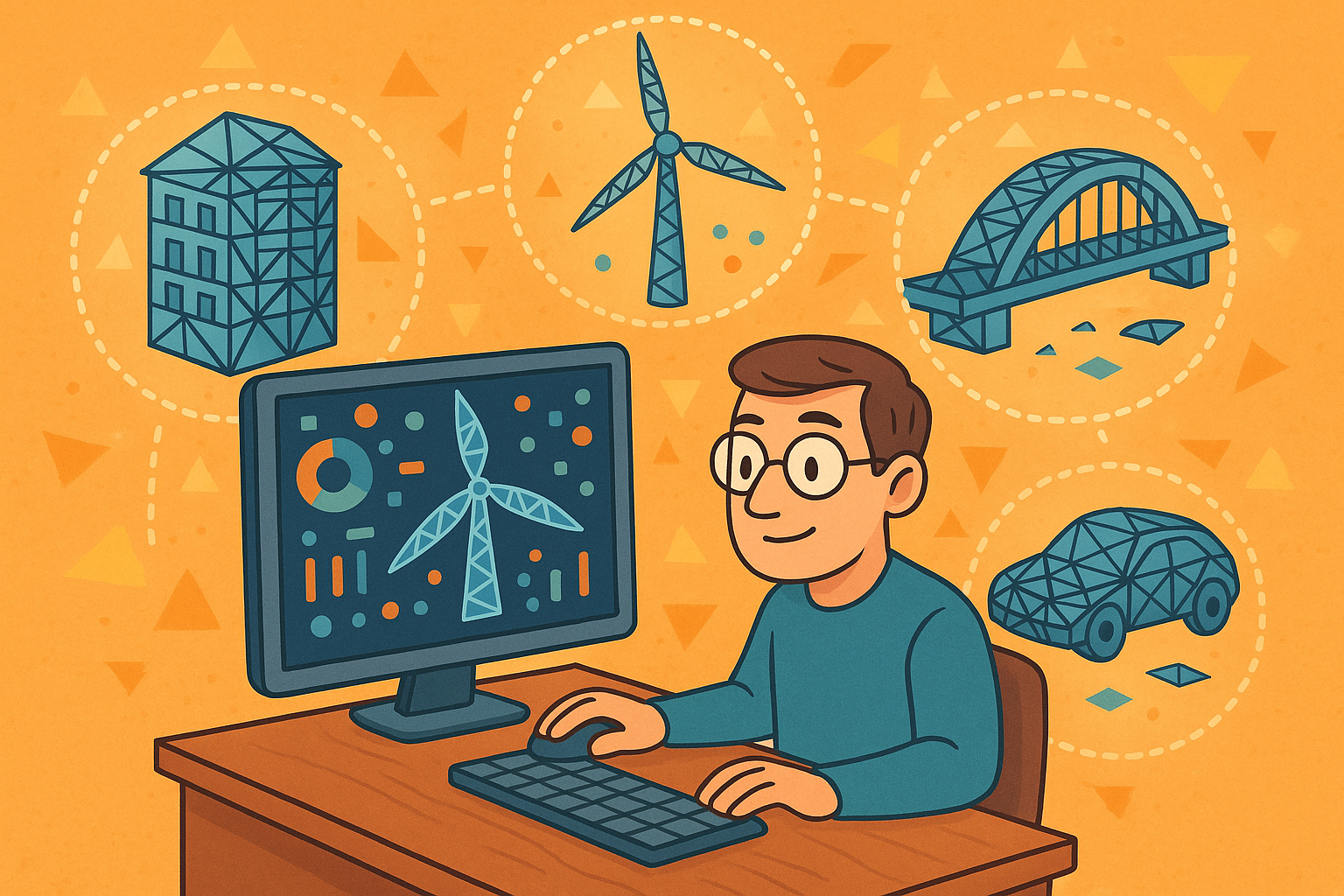Your Cart is Empty
Customer Testimonials
-
"Great customer service. The folks at Novedge were super helpful in navigating a somewhat complicated order including software upgrades and serial numbers in various stages of inactivity. They were friendly and helpful throughout the process.."
Ruben Ruckmark
"Quick & very helpful. We have been using Novedge for years and are very happy with their quick service when we need to make a purchase and excellent support resolving any issues."
Will Woodson
"Scott is the best. He reminds me about subscriptions dates, guides me in the correct direction for updates. He always responds promptly to me. He is literally the reason I continue to work with Novedge and will do so in the future."
Edward Mchugh
"Calvin Lok is “the man”. After my purchase of Sketchup 2021, he called me and provided step-by-step instructions to ease me through difficulties I was having with the setup of my new software."
Mike Borzage
Design Software History: Revolutionizing Digital Design: The Legacy of Alias Software in Automotive and Beyond
August 21, 2024 4 min read


An In-Depth History of Alias Design Software
Introduction to Alias and Its Origins
Alias Research Inc. was founded in 1983 by a trio of visionaries: Stephen Bingham, Nigel McGrath, and Susan McKenna. With a shared passion for computer graphics and design, they embarked on a mission to revolutionize the design software industry. The early 1980s saw a burgeoning interest in digital design tools, and Alias sought to position itself at the forefront of this wave.
The initial goals for Alias Research Inc. were ambitious but clear: to create powerful, intuitive design software that could be adopted by various industries, from automotive to entertainment. The founders believed that by integrating advanced computer graphics techniques, they could provide designers with unprecedented flexibility and precision.
Alias' first software offerings, Alias 1 and Alias 2, were groundbreaking in their own right. These early versions featured a range of innovations that set them apart from existing tools. Key features included advanced surface modeling capabilities and real-time rendering, which allowed designers to visualize their creations more effectively. The initial reception from target industries, particularly automotive design studios, was overwhelmingly positive. Companies were quick to recognize the potential of Alias software to streamline their design processes and enhance the quality of their products.
Alias' Influence on Automotive Design
One of the most significant breakthroughs for Alias came with its adoption in automotive design studios. The ability to create highly detailed and accurate surface models made Alias software an invaluable tool for car designers. Major automotive companies, including General Motors, Ford, and BMW, were among the early adopters of Alias, leveraging its capabilities to create some of the most iconic car designs of the era.
Alias' impact on automotive design was multifaceted. Firstly, the software's surface modeling capabilities allowed designers to create complex, organic shapes with a high degree of precision. This was particularly important in the automotive industry, where the aesthetic and aerodynamic properties of a vehicle's body are crucial. Alias' use of NURBS (Non-Uniform Rational B-Splines) enabled designers to produce smooth, continuous surfaces, which were essential for creating sleek, modern car designs.
Another key feature of Alias software that made it ideal for automotive design was its real-time rendering and visualization tools. These tools allowed designers to see how their models would look in the real world, enabling them to make more informed design decisions. The importance of precise and flexible modeling in car design cannot be overstated. Automotive designers require tools that allow them to iterate quickly and refine their designs to perfection. Alias provided this capability, making it an indispensable part of the automotive design process.
Technological Advancements and Industry Impact
As Alias software evolved, so too did its capabilities. The development of Alias Studio and Alias PowerAnimator marked significant milestones in the software's history. These versions integrated advanced tools for animation, rendering, and visual effects, expanding the software's appeal beyond the automotive industry. Alias began to be adopted in other sectors, including film, aerospace, and consumer products, where its powerful modeling and visualization tools proved equally valuable.
The impact of Alias on various industries was further amplified by a series of strategic acquisitions and mergers. In 1995, Alias was acquired by Silicon Graphics Inc. (SGI), a leading provider of high-performance computing solutions. This acquisition provided Alias with the resources and expertise needed to further enhance its software offerings. Subsequently, Alias merged with Wavefront to form Alias|Wavefront, combining the strengths of both companies to create a more comprehensive suite of design tools.
Another pivotal moment in the history of Alias came in 2006 when it was acquired by Autodesk, a global leader in 3D design software. This acquisition had a significant impact on the development of Alias software, with Autodesk integrating Alias into its broader portfolio of design tools. The acquisition also facilitated greater collaboration between Alias and other Autodesk products, such as AutoCAD and Fusion 360, further enhancing the capabilities of Alias software.
Legacy and Continuing Innovation
The lasting impact of Alias on the design software industry is undeniable. Its influence can be seen in many modern CAD and 3D modeling tools, which have adopted and built upon the innovations pioneered by Alias. The contributions of Alias to industry standards in automotive and industrial design are particularly noteworthy, with its advanced surface modeling and visualization tools setting a benchmark for other software to follow.
Notable figures and designers who championed Alias played a crucial role in its success. These individuals recognized the potential of Alias software and were instrumental in driving its adoption across various industries. Their work helped to establish Alias as a leader in design software and ensured its enduring legacy.
Looking to the future, Alias continues to thrive under the stewardship of Autodesk. The current state of Alias reflects a commitment to innovation and excellence, with ongoing integration with other Autodesk products enhancing its capabilities. Emerging technologies, such as artificial intelligence and machine learning, hold exciting potential for the future development of Alias software. These advancements could further enhance the precision and efficiency of design processes, cementing Alias' position as a vital tool for designers.
In summary, the history of Alias is a testament to the power of vision and innovation in transforming industries. From its humble beginnings to its current status as a cornerstone of design software, Alias has continually pushed the boundaries of what is possible in digital design. Its influence on automotive design, technological advancements, and enduring legacy underscore its importance in the history of design software.
Also in Design News

Design Software History: From Plotters to Procedural Intent: A Technical History of Generative and Parametric Design Software
January 04, 2026 13 min read
Read More
Semantic Meshes: Enabling Analytics-Ready Geometry for Digital Twins
January 04, 2026 12 min read
Read MoreSubscribe
Sign up to get the latest on sales, new releases and more …



